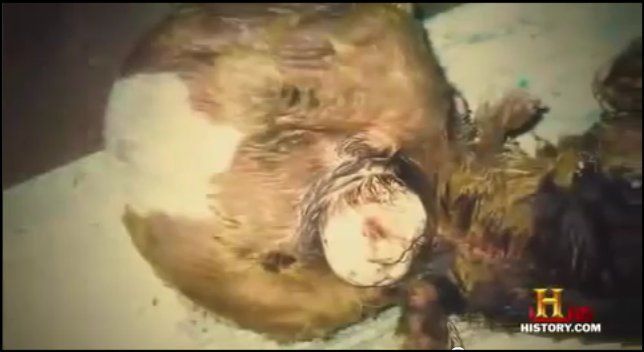
Posted on 05/18/2016 4:48:01 PM PDT by BenLurkin
A handful of scientists around the United States are trying to do something that some people find disturbing: make embryos that are part human, part animal.
The researchers hope these embryos, known as chimeras, could eventually help save the lives of people with a wide range of diseases.
One way would be to use chimera embryos to create better animal models to study how human diseases happen and how they progress.
Perhaps the boldest hope is to create farm animals that have human organs that could be transplanted into terminally ill patients.
But some scientists and bioethicists worry the creation of these interspecies embryos crosses the line. "You're getting into unsettling ground that I think is damaging to our sense of humanity," says Stuart Newman, a professor of cell biology and anatomy at the New York Medical College.
The experiments are so sensitive that the National Institutes of Health has imposed a moratorium on funding them while officials explore the ethical issues they raise.
Nevertheless, a small number of researchers are pursuing the work with private funding. They hope the results will persuade the NIH to lift the moratorium.
"We're not trying to make a chimera just because we want to see some kind of monstrous creature," says Pablo Ross, a reproductive biologist at the University of California, Davis. "We're doing this for a biomedical purpose."
The NIH is expected to announce soon how it plans to handle requests for funding.
Recently, Ross agreed to let me visit his lab for an unusual look at his research. During the visit, Ross demonstrated how he is trying to create a pancreas that theoretically could be transplanted into a patient with diabetes.
The first step involves using new gene-editing techniques to remove the gene that pig embryos need to make a pancreas.
Working under an elaborate microscope, Ross makes a small hole in the embryo's outer membrane with a laser. Next, he injects a molecule synthesized in the laboratory to home in and delete the pancreas gene inside. (In separate experiments, he has done this to sheep embryos, too.)
After the embryos have had their DNA edited this way, Ross creates another hole in the membrane so he can inject human induced pluripotent stem cells, or iPS for short, into the pig embryos.
Like human embryonic stem cells, iPS cells can turn into any kind of cell or tissue in the body. The researchers' hope is that the human stem cells will take advantage of the void in the embryo to start forming a human pancreas.
Because iPS cells can be made from any adult's skin cells, any organs they form would match the patient who needs the transplant, vastly reducing the risk that the body would reject the new organ.
But for the embryo to develop and produce an organ, Ross has to put the chimera embryos into the wombs of adult pigs. That involves a surgical procedure, which is performed in a large operating room across the street from Ross's lab.
The day Ross opened his lab to me, a surgical team was anesthetizing an adult female pig so surgeons could make an incision to get access to its uterus.
Ross then rushed over with a special syringe filled with chimera embryos. He injected 25 embryos into each side of the animal's uterus. The procedure took about an hour. He repeated the process on a second pig.
Every time Ross does this, he then waits a few weeks to allow the embryos to develop to their 28th day — a time when primitive structures such as organs start to form.
Ross then retrieves the chimeric embryos to dissect them so he can see what the human stem cells are doing inside. He examines whether the human stem cells have started to form a pancreas, and whether they have begun making any other types of tissues.
The uncertainty is part of what makes the work so controversial. Ross and other scientists conducting these experiments can't know exactly where the human stem cells will go. Ross hopes they'll only grow a human pancreas. But they could go elsewhere, such as to the brain.
"If you have pigs with partly human brains you would have animals that might actually have consciousness like a human," Newman says. "It might have human-type needs. We don't really know."
That possibility raises new questions about the morality of using the animals for experimentation. Another concern is that the stem cells could form human sperm and human eggs in the chimeras.
"If a male chimeric pig mated with a female chimeric pig, the result could be a human fetus developing in the uterus of that female chimera," Newman says. Another possibility is the animals could give birth to some kind of part-human, part-pig creature.
"One of the concerns that a lot of people have is that there's something sacrosanct about what it means to be human expressed in our DNA," says Jason Robert, a bioethicist at Arizona State University. "And that by inserting that into other animals and giving those other animals potentially some of the capacities of humans that this could be a kind of violation — a kind of, maybe, even a playing God."
Ross defends what his work. "I don't consider that we're playing God or even close to that," Ross says. "We're just trying to use the technologies that we have developed to improve peoples' life."
Still, Ross acknowledges the concerns. So he's moving very carefully, he says. For example, he's only letting the chimera embryos develop for 28 days. At that point, he removes the embryos and dissects them.
If he discovers the stem cells are going to the wrong places in the embryos, he says he can take steps to stop that from happening. In addition, he'd make sure adult chimeras are never allowed to mate, he says.
"We're very aware and sensitive to the ethical concerns," he says. "One of the reasons we're doing this research the way we're doing it is because we want to provide scientific information to inform those concerns."
Ross is working with Juan Carlos Izpisua Belmonte from the Salk Intitute for Biological Studies in La Jolla, Calif., and Hiromitsu Nakauchi at Stanford University. Daniel Garry of the University of Minnesota and colleagues are conducting similar work.
Yeah. Wrong, Pan flutes went out a long time ago.

Here’s a movie script just waiting to be written.

Puppy Monkey Baby!
Obama pelosi Hillary
Speaking as a scientist very familiar with this particular field of research, I have to say that this article is so badly written that it is difficult to determine what, exactly, this guy is doing. To be fair, if it included the kind of technical details I would like to see, I would be one of very few people who could actually understand it.
I think it would be nice if pigs could be used to grow human organs. There are a lot of problems with this, however. One is that all animals have retroviruses present in the genomes; in fact, a significant percentage of our DNA is actually virus DNA. There is a potential problem in that pig retroviruses could enter a human organ if it is grown in a pig—and we do not know what would happen. The pig virus could be pathogenic in a human. Another problem is that cells tend to move around—slowly, but they can move. So a human organ grown in a pig would almost certainly contain some pig cells. Pig cell surface receptors would be recognized as foreign by a human immune system. Thus, even if an organ were grown in a pig out of a patient’s own stem cells, that organ could contain pig cells which would trigger immune reaction and potential rejection.
I have seen some progress in growing organs in vitro, using plastic scaffolding to give the growing cells some structure. I grew tiny lungs to test lung function, but my tiny lungs were not even remotely at the point where they could be used therapeutically. However, I saw a presentation by someone growing blood vessels in vitro, vessels that functioned very much as they would in the body. Imagine replacing diseased arteries with fresh new vessels—so many lives could be saved!
One day, we will have true regenerative medicine. That day can’t come soon enough. The idea of organ transplantation is abhorrent to me—so abhorrent that I would choose to die rather than hope a health person dies so I can get their organs. But organs grown in vitro would have none of the moral issues—they could save lives without ever costing lives.
“Muslim men are particularly interested in sheep with more human-like lady parts”
no no no ... It’s not lady parts they are interested in.
The island of Dr. Moreau.
History of the human race in two acts:
1) What could possibly go wrong?
2) How was I supposed to know?
“Help me, Help meeeee”
“A handful of scientists around the United States are trying to do something that some people find disturbing: make embryos that are part human, part animal.”
No. It is more than disturbing. This cries to Heaven for judgement.
Yeah right, they're doing all this research and spending all
this money, just to destroy their abominable creations after 28 days.
Anyone who believes that, is extremely gullible.

HORROR show.
FYI - Catholic ping!
One again that crazy nut Alex Jones is proven right. He’s been talking about this for more than a decade.
That deserves being shouted from the housetops.
One doesn't know what to say anymore. I am shell-shocked by the pace of the insanity.
“What is the law?”
“Not to eat meat, that is the law. Are we not men?”
“Are we not men?”
“What is the law?”
“Not to go on all fours, that is the law. Are we not men?”
“Are we not men?”
“What is the law?
“Not to spill blood, that is the law. Are we not men?”
“Are we not men?”
Disclaimer: Opinions posted on Free Republic are those of the individual posters and do not necessarily represent the opinion of Free Republic or its management. All materials posted herein are protected by copyright law and the exemption for fair use of copyrighted works.